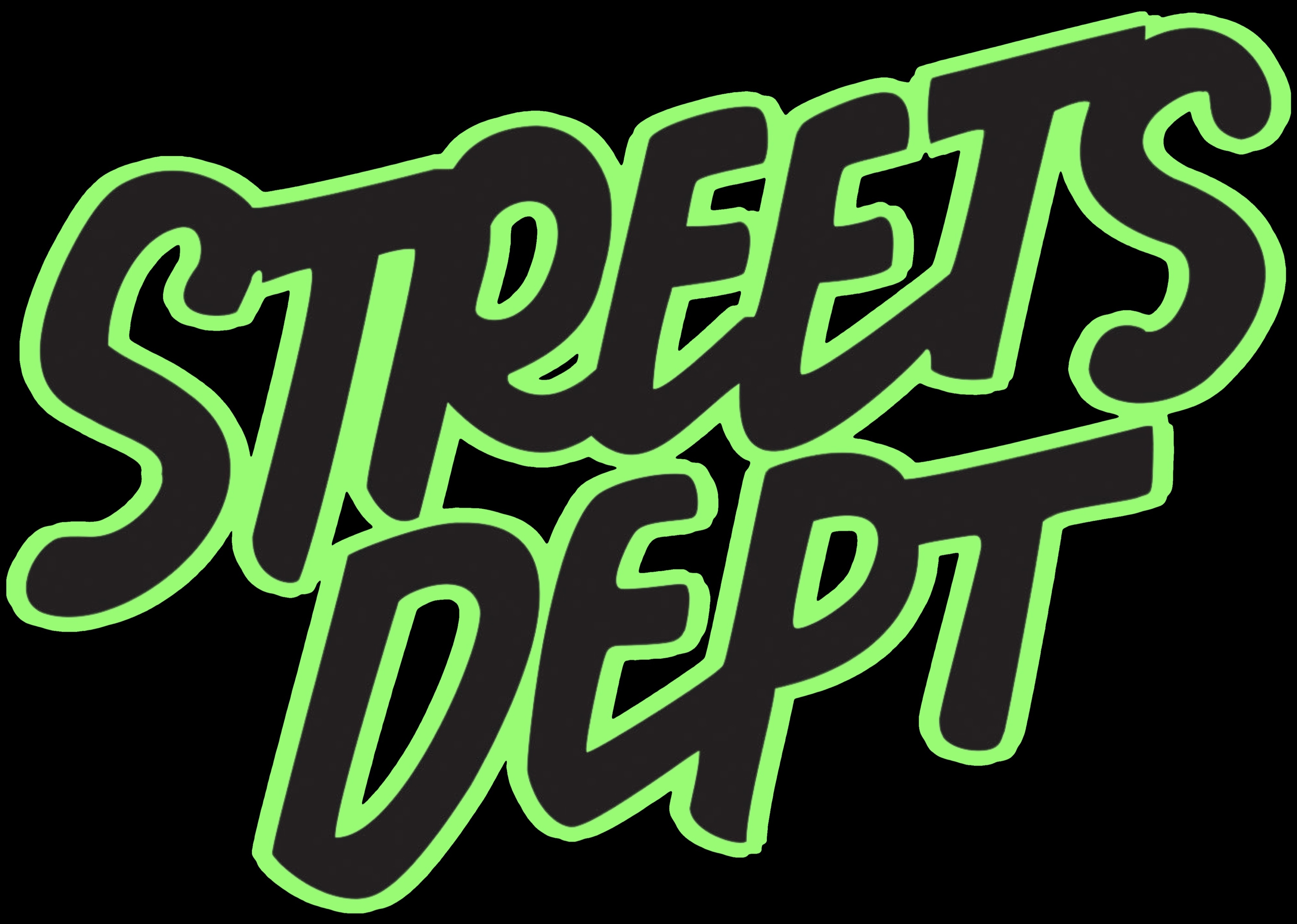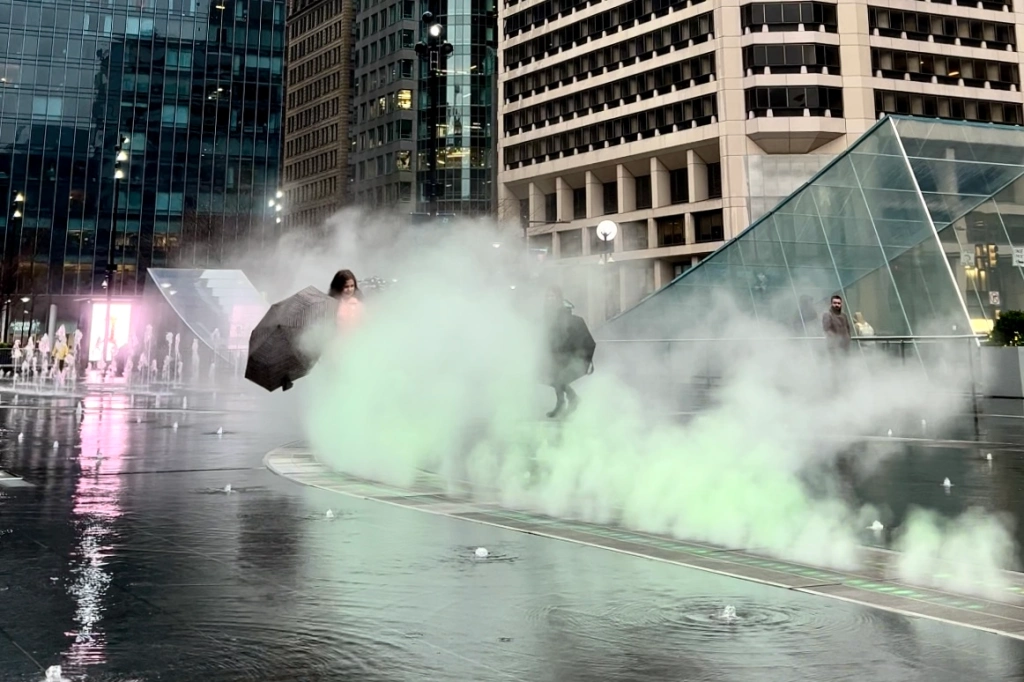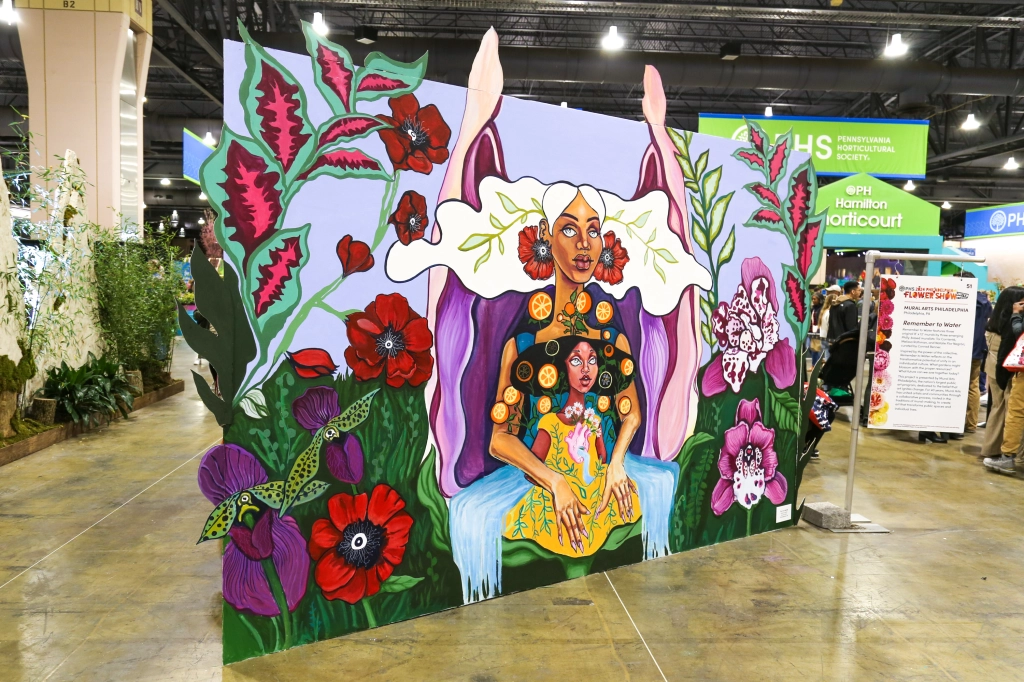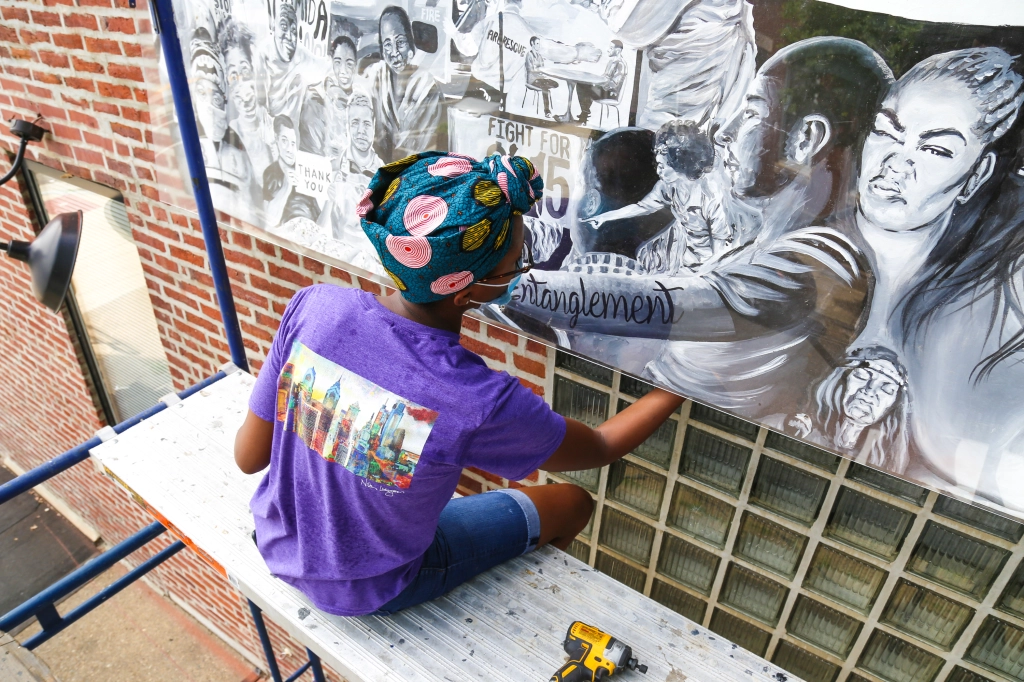
Interview and photos by Streets Dept’s Conrad Benner.
This fall, Afromation Avenue unveiled its second annual series of positive affirmation street signs in Germantown! A public art project “for the neighborhood by the neighborhood,” this effort is the brainchild of two Philadelphia public school teachers and artists, Brittni Jennings and Kristin Kelly; created with support from Mural Arts Philadelphia. Streets Dept is also a supporter of the project, and I have been consulting on it since 2022.
After launching the project last year in West Philly, Brittni and Kristin set their sights on Germantown for its 2023 iteration. This year saw the inclusion of two new collaborative artists, Kita Rich and NOMAD.


Together, the four artists created signs in their own styles but inspired by numerous engagements with Germantown community members that took place over the summer at various neighborhood events. The artworks can now be found at three key areas around Germantown: in Vernon Park, and along Germantown Avenue and Maplewood Mall. Like the Afromation Avenue signs in West Philly, these are designed to permanent fixtures in the neighborhood.
To learn more about Afromation Avenue and this year’s Germantown project, I talked with its creators!
Streets Dept’s Conrad Benner: If this is someone’s first time hearing about your project–what is Afromation Avenue, and why’d you create it?
Afromation Avenue’s Brittni Jennings and Kristin Kelly: Following the murder of George Floyd, we initiated a small project aimed at fostering moments of joy within our school communities as our students struggled to grapple with the continued brutality against Black individuals. Together we crafted a two-volume series designed to promote self-love, celebrate Black culture and voice as a means to inspire and empower our learners.
In efforts to extend our vision beyond the classroom, we developed a public art project “Afromation Avenue” designed to preserve the cultural integrity of Black spaces in Philadelphia. In collaboration with local Black artists and community members, personalized positive affirmation street signs find a permanent home within the landscape of our communities.
Through creative placemaking we work to nurture environments where our stories are heard, our communities are seen, and our joy is felt.


SD: Who are this year’s artists, and how did you curate them?
AA: We are intentional about working with local Black artists to best give voice to the communities in which we collaborate and serve. This year we decided to hold an open call submission and were deeply moved by not only the work but the mission of both artists Kita Rich and NOMAD.
Kita is a Mural Arts Black Fellow who advocates for the protection of Black spaces. They firmly believe that public art should beautify landscapes and serve as a source of strength and connection for the communities it becomes a part of; “the true value of public art isn’t determined by the artist or designer but is instead shaped by its daily interactions with the community it inhabits.”
NOMAD is a Germantown native and anonymous street artist working to uplift his community through his notable tags proclaiming “Black is beautiful.” He is an anti-gentrification advocate and believes through his work “any one of us can be NOMAD so that means any one of us can be a star.”
As we continue to champion and uplift the voices of local Black artists and communities, we recognize the profound influence art can have in shaping and strengthening these spaces. Through these collaborations, we strive to contribute meaningfully to the ongoing dialogue surrounding representation, identity, and the enduring beauty of Black voices.



SD: Why Germantown for your second year? And how did you choose the signs’ final locations?
AA: As creators and curators of public art, we are dedicated to our mission of challenging the monolithic narratives surrounding Black culture and history in America. Our why honors Fanon’s position on the most valuable asset for a colonized people, “ the most essential value, because the most concrete, is first and foremost the land: the land which will bring them bread and, above all, dignity.”
There is no Germantown without Black folks.
G-Town is known for the 1688 Germantown Quaker Petition Against Slavery, the Johnson House–part of the underground railroad, and the first museum dedicated to preserving stories of classic and contemporary writers sits in the historic corridor of Vernon Park.
Some of our favorite creatives like Sonia Sanchez, Ursula Rucker, and Sun Ra made Germantown their home.
We are very excited to have Afromation Avenue be a permanent fixture to a long history of Black resistance, creativity, and entrepreneurship.
This installment of Afromation Avenue is located in:
- Vernon Park’s Black Writers Museum: The only museum housing collections of first edition and autographed books, rare newspapers, documents and more by classic and contemporary Black writers.
- Germantown Avenue: Known for its independent Black-owned businesses, the avenue is home to Uncle Bobbie’s Bookstore, Kinesics Dance Dynamics Theatre (KDD), and Ubuntu Fine Art Gallery, “The First Black Owned, Single Artist Fine Art Photography Gallery in the World.”
- Maplewood Mall: Germantown’s center for Black-owned businesses.
Wherever Afromation Avenue is, we aim to foster a holistic celebration of the diverse and thriving ecosystem.



SD: What did you learn as you participated in community events through the summer? A big takeaway?
AA: This project is a constant reminder of how people invest in people. As we continue to make a conscious effort to give an ear to the keepers of our histories, the aunties, the neighbor sitting on his stoop from across the way, the small business owner, and the artist, in turn, we foster a deeper connection to our ancestral purpose. The weaving of personal narratives allows space for common ground, shared dreams, and collective strength. Through our genuine investment in our people, we not only preserve the past but also build a foundation for a more inclusive and understanding future. This collaborative effort is rooted in the belief that everyone has a story worth sharing.
SD: Can you tell us a detail about one of the signs you created, a detail about your thought process in choosing that message and/or about its design?

AA’s Brittni Jennings: “Black Life We The Vibe” is the third of my five designs, this sign speaks to the idea that human civilization started with melanated people. Black lives are the mothers of language, the fathers of science, and the architects of cultural revolution. For centuries we have always been THE MUSE and yet our physical appearance, where and how we hold space are constantly policed and scrutinized. To declare Black people to be THE VIBE (muse, or ultimate desire) is a protest to the racist tropes of which dilutes our contribution to the human experience.

AA’s Kristin Kelly: “Movement is Life.” My sign draws inspiration from John Africa, the founding member of MOVE, who once stated, “Everything that’s alive moves. If it didn’t, it would be stagnant, dead.” This reminded me of the importance of encouraging our children to be active, especially given the diminishing opportunities for physical education and the scarcity of safe outdoor areas for them to engage in play. The act of movement positively impacts children’s cognitive development, fostering exploration, a sense of wonder, and the strengthening of their self-perception. Notably, there exist racial disparities in access to public green spaces, which serve as essential environments for our children to move freely and securely. Movement is synonymous with life.



SD: What has the public response been thus far?
AA: We appreciate our Germantown family for being extremely supportive! Business owners and passersby have been very engaged with the art, appreciate its aesthetic value, shared their favorite affirmations, and felt inspired by the signs.
Many noted how they feel Afromation Avenue has enhanced the visual appeal of the area helping to drive traffic to areas such as Maplewood Mall. It is always a privilege to contribute to the local economy by circulating the Black dollar in Black communities.
Afromation Avenue is more than an intellectual exercise for visitors, it is a message from Black communities to Black communities.





Leave a comment